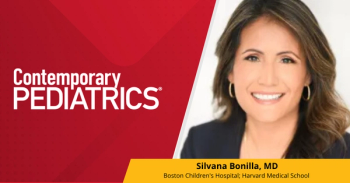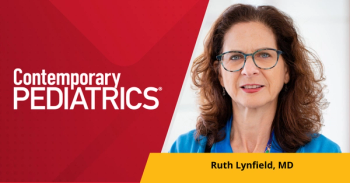
AAP releases guideline on evaluating and treating pediatric obesity
The February 2023 edition of Pediatrics included evidence-based guidelines from the American Academy of Pediatrics on evaluating and treating obesity in children and adolescents.
The American Academy of Pediatrics (AAP) has released its first guideline for the evaluation and treatment of pediatric patients with obesity.
There are more than 14.4 million children and adolescents in the United States with obesity. These individuals are often stigmatized, and when left untreated they may develop severe short- and long-term health complications.
The AAP has stated that recognition of the factors which lead to obesity can lead to successful treatment, which has been proven safe and effective.
Evidence-based recommendations for treating obesity in patients aged 2 years and older can be found in, “Clinical Practice Guideline for the Evaluation and Treatment of Children and Adolescents With Obesity,” published in the February 2023 issue of Pediatrics.
“Research tells us that we need to take a close look at families—where they live, their access to nutritious food, health care and opportunities for physical activity—as well as other factors that are associated with health, quality-of- life outcomes, and risks,” said Sarah Hampl, MD, a lead author of the guideline.
The guideline contains recommendations on evaluating and treating obesity and overweight in children, along with associated health concerns. Recommendations include intensive health behavior and lifestyle treatment (IHBLT),motivational interviewing, metabolic and bariatric surgery, and pharmacotherapy.
Children’s family systems, resources, community context, and health status should be considered. There are discussions in the guideline on inequalities in childhood which increase risk of obesity, along with increased risks for children with special health care needs. Inequalities discussed include structural racism, low socioeconomic status, household food insecurity, and the marketing of unhealthy food.
Overweight is body mass index (BMI) between the 85th and 95th percentiles for children of the same sex and age, while obesity is BMI above the 95th percentile. While the guideline does not discuss obesity prevention, a future AAP policy statement will discuss the topic.
According to the AAP, primary care physicians should oversee ongoing medical monitoring, intensive and long-term care strategies, and treatment for obese children and adolescents.
“The goal is to help patients make changes in lifestyle, behaviors or environment in a way that is sustainable and involves families in decision-making at every step of the way,” said Sandra Hassink, MD, vice chair of the Clinical Practice Guideline Subcommittee on Obesity.
The AAP has also said that physical activity treatment, behavioral therapy, nutrition support, pharmacotherapy, and metabolic and bariatric surgery are all aspects of comprehensive obesity treatment. According to the AAP, the most effective known form of obesity treatment is IHBLT, though it is not universally available.
There is no harm associated with evidence-based treatment delivered by trained health care professionals alongside active involvement from parents or caregivers. Medical indications, risks, and benefits should be considered when offering weight loss pharmacotherapy to adolescents aged 12 years and older with obesity.
Adolescents aged 13 years and older with severe obesity should be evaluated for metabolic and bariatric surgery.
The AAP has urged for public health policies to cover comprehensive prevention, evaluation, and treatment of obesity. These policies should also address structural racism which leads to disparities in childhood obesity.
“The medical costs of obesity on children, families and our society as a whole are well-documented and require urgent action,” Hampl said. “This is a complex issue, but there are multiple ways we can take steps to intervene now and help children and teens build the foundation for a long, healthy life.”
Reference
American Academy of Pediatrics issues its first comprehensive guideline on evaluating, treating children and adolescents with obesity. American Academy Pediatrics. January 9, 2023. Accessed January 9, 2023.
Newsletter
Access practical, evidence-based guidance to support better care for our youngest patients. Join our email list for the latest clinical updates.














